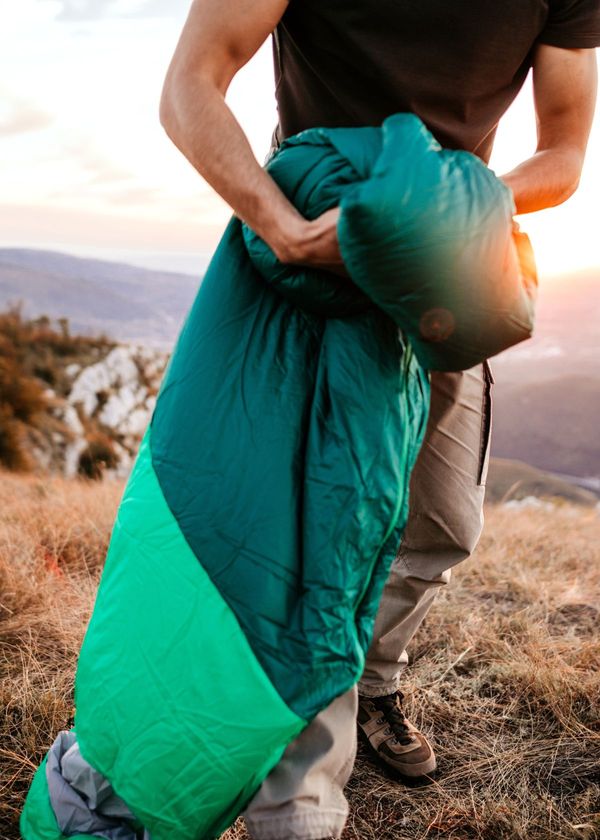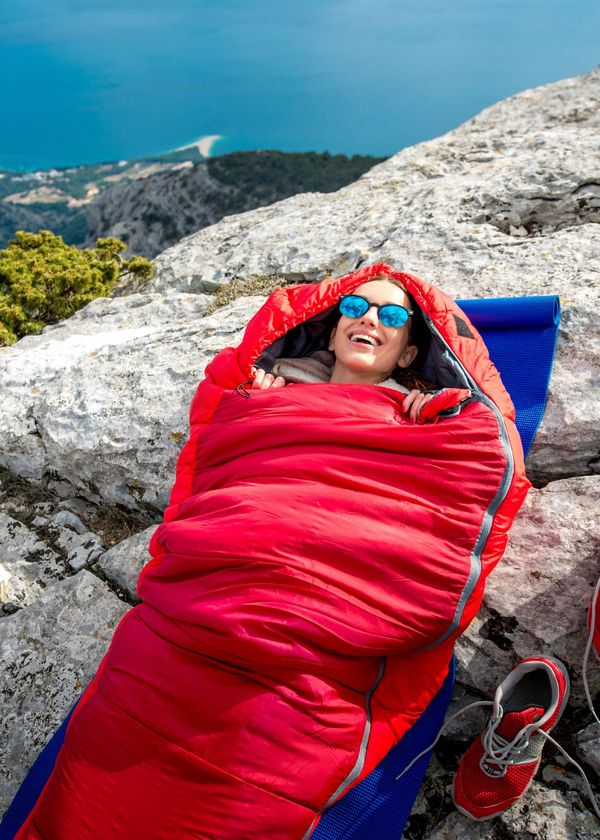Hiking is an exciting and rewarding outdoor activity that brings you closer to nature and helps you escape the daily life's hustle and bustle. However, to enjoy a comfortable and safe hiking experience, you need to have the right gear, and one of the most crucial pieces of equipment is your hiking boots.
Hiking boots provide support, stability, and protection for your feet on rough and uneven terrain. They can make or break your hiking experience, so ensuring they fit correctly is crucial. Poorly fitting boots can lead to discomfort, blisters, and even injuries, ruining your hike and potentially putting you in danger.
But how should waterproof hiking boots fit? Many hikers struggle with this question, and it's understandable. The perfect fit depends on various factors, such as your foot shape, size, and the type of hiking you'll be doing. Buying hiking boots and hoping for the best is not as simple.
In this article, we'll explore the essential factors to consider when fitting hiking boots and provide practical tips to help you find the perfect hiking boot fit. Whether you're a seasoned hiker or a beginner, this guide will help you choose the right hiking boots for your next adventure.

Factors to Consider When Choosing Hiking Boots
Hiking is a great way to explore nature, but it can quickly become a painful and uncomfortable experience without the right footwear. Hiking boots are essential equipment that can make or break your hiking trip. Choosing the right hiking boots can be a daunting task, as many different types and brands are available.
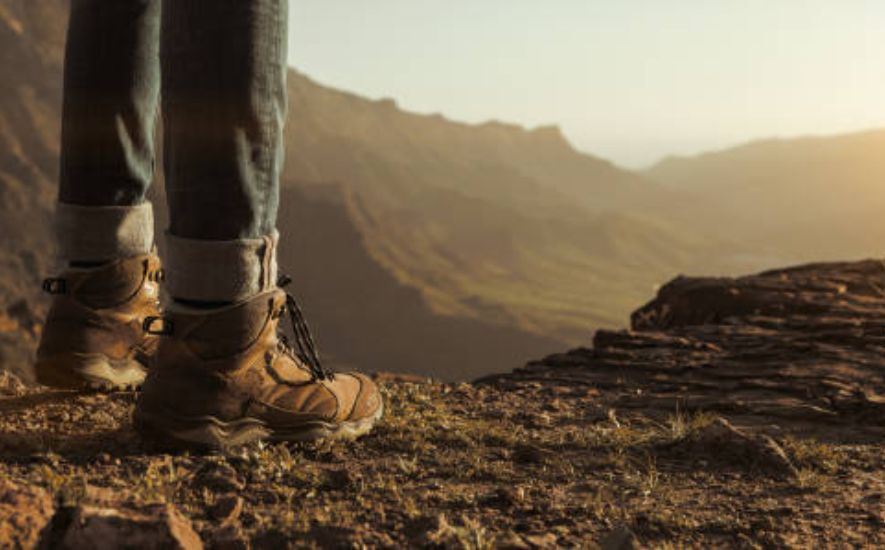
Terrain and Activity Level
The type of terrain you plan to hike on and the level of activity you will be engaging in are the most important factors to consider when choosing hiking boots.
If you plan to hike on rugged terrain with steep inclines and descents, you will need boots with good ankle support and traction. If you plan to engage in high-intensity activities such as trail running or scrambling, you will need boots with a more flexible sole and lighter weight.
Boot Type
There are three main types of hiking boots: low-cut, mid-cut, and high-cut. Low-cut boots are suitable for light hiking and day trips on well-maintained trails. Mid-cut boots provide more ankle support and are suitable for moderate to difficult hikes on uneven terrain. High-cut boots offer the most ankle support and are suitable for long hikes with heavy loads, such as backpacking trips.
Fit and Comfort
The fit and comfort of hiking boots are crucial for a successful hiking trip. Choosing boots that fit well and are comfortable is essential, as ill-fitting boots can cause blisters, hot spots, and foot pain. When trying on hiking boots, make sure to wear the same socks you will be wearing on your hiking trip and walk around in them to ensure a proper fit.
Materials and Durability
The materials used to make hiking boots can affect their durability and performance. Leather is a popular material for hiking boots as it is durable and provides good ankle support. However, leather boots can be heavy and require more break-in time. Synthetic materials such as Gore-Tex are lightweight and breathable but may not be as durable as leather.
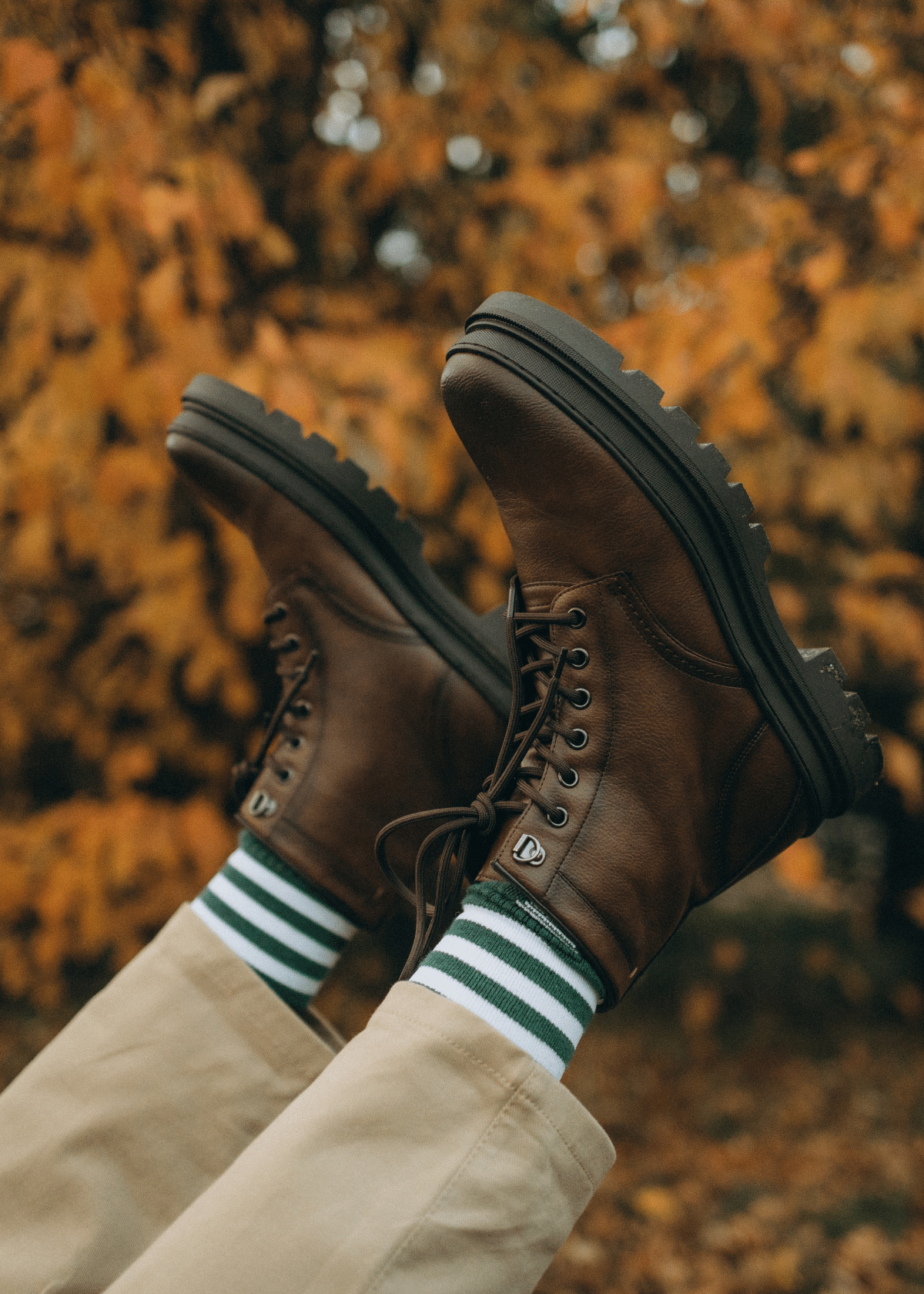
Measuring and trying on hiking boots
Hiking is a fantastic way to connect with nature, explore new terrain, and challenge oneself physically and mentally. However, a successful hiking experience depends heavily on having the right gear, especially when it comes to footwear.
Typical hiking boots are a crucial component of any hiking kit, providing the support, traction, and protection necessary for tackling uneven and unpredictable terrain. But how do you choose the right pair of boots for your needs?
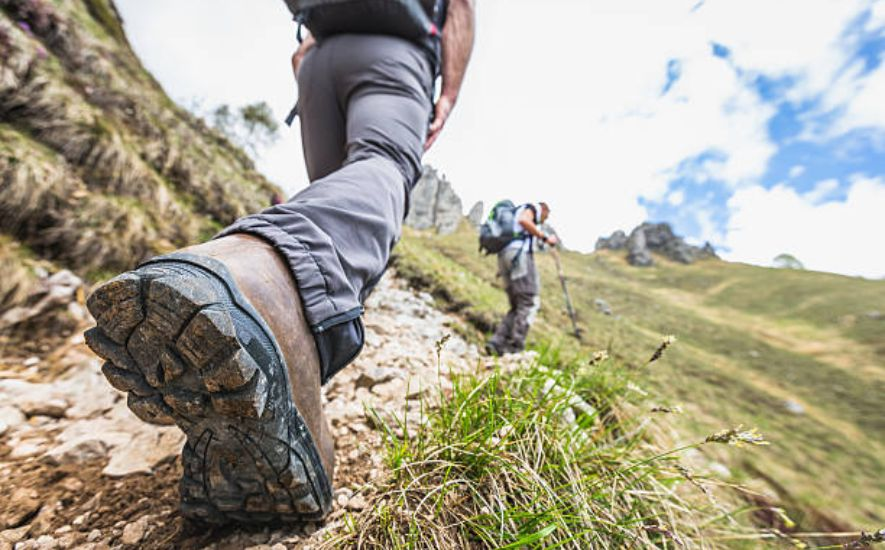
Measuring Your Feet
Before you start trying on hiking shoes, it's essential to measure your feet accurately. Feet can change size and shape over time, so it's important to take current measurements rather than relying on your previous hiking shoe size. To measure your feet, start by standing barefoot on a piece of paper and tracing around each foot with a pencil. Then, use a ruler or measuring tape to measure the length and width of each foot. It's essential to measure both feet, as they can differ in size.
Choosing the Right Boot Type
Once you have your measurements, you can start to consider what type of new hiking boots you need. There are three main categories of mountaineering boots: lightweight, midweight, and heavyweight.
Lightweight boots are suitable for day hikes on relatively flat terrain, while midweight boots are ideal for multi-day hikes with moderate elevation gain. Heavyweight boots are designed for intense hikes with steep inclines, heavy loads, or rough terrain.
Trying on Hiking Boots
When trying on hiking boots, it's essential to wear the thick socks you plan to wear while hiking. This will ensure a more accurate fit, as different wool socks can affect the way boots feel. It's also best to try on trail running shoes in the afternoon or evening when your feet are likely to be at their largest.
When you try on boots, start by loosening the laces and slipping your foot into the boot. Then, lace up the boot tightly and stand up, taking care to ensure your heel is snug in the back of the boot. Walk around the store, paying attention to how the new boots feel on your feet. You should have enough room in the toe box to wiggle your toes, but not so much that your foot slides around inside the boot.
Additional Considerations
When choosing hiking boots, there are a few additional factors to consider. Firstly, think about the type of closure you prefer. Some boots have traditional laces, while others have quick-lacing systems or no laces.
Choose the closure system that feels most comfortable and secure to you. Secondly, consider the material of the boot. Leather boots are durable and supportive but can be heavy, while synthetic materials are lightweight but may not be as durable.

Tips for achieving a proper fit
Hiking is an enjoyable and exciting activity that allows you to explore the great outdoors and enjoy nature. However, to enjoy your hiking experience to the fullest, wearing proper hiking boots that fit well is crucial.
Wearing poorly fitting hiking boots can lead to blisters, sore feet, and injuries. To help you achieve a proper fit on your hiking boots, we have compiled some essential tips that will ensure a comfortable and safe hiking experience.
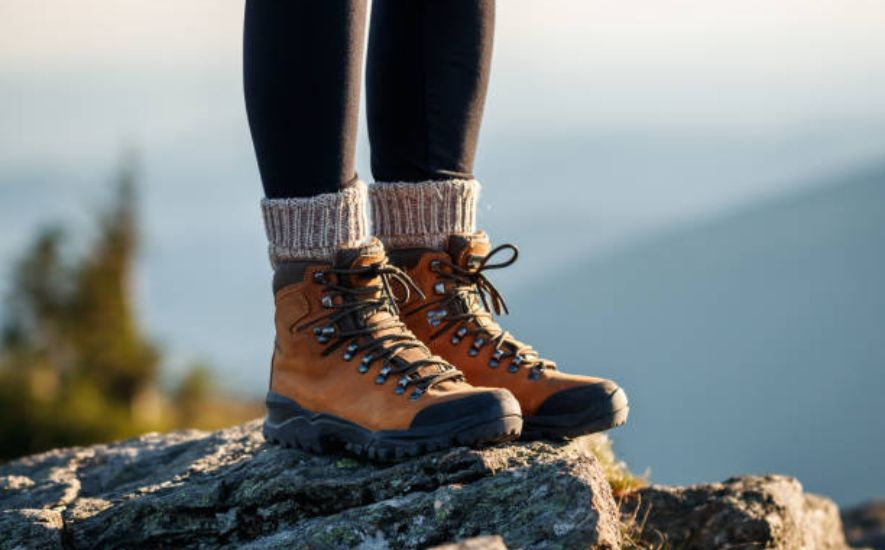
Measure Your Feet
Before purchasing hiking boots, it's essential to measure your feet accurately. The size and shape of your feet can change over time, and it's crucial to ensure that your winter boots fit properly. Measure your feet at the end of the day when they are at their largest or half-size.
Wear the hiking socks you plan on wearing during your hikes, and measure both feet to determine the larger one. Always choose the size of the larger foot when selecting hiking boots.
Consider the Width
Just like your feet's length, the width of your feet is equally important when it comes to finding the right fit for your hiking boots. Hiking boots are available in various widths, and choosing the right width is crucial to ensure a comfortable fit.
Your feet should not feel cramped or compressed in the boot's toe box or heel cup. Make sure that there is enough space for your toes to wiggle and that the heel is snugly fit.

Common fit issues and solutions
Hiking is an excellent way to explore the great outdoors and immerse oneself in nature. However, a poorly fitted pair of hiking boots can make the experience uncomfortable and even painful. Common fit issues like blisters, hot spots, and pressure points can ruin even the most breathtaking hiking trails. Therefore, it's important to understand the fit issues and solutions to ensure a comfortable and enjoyable hike.
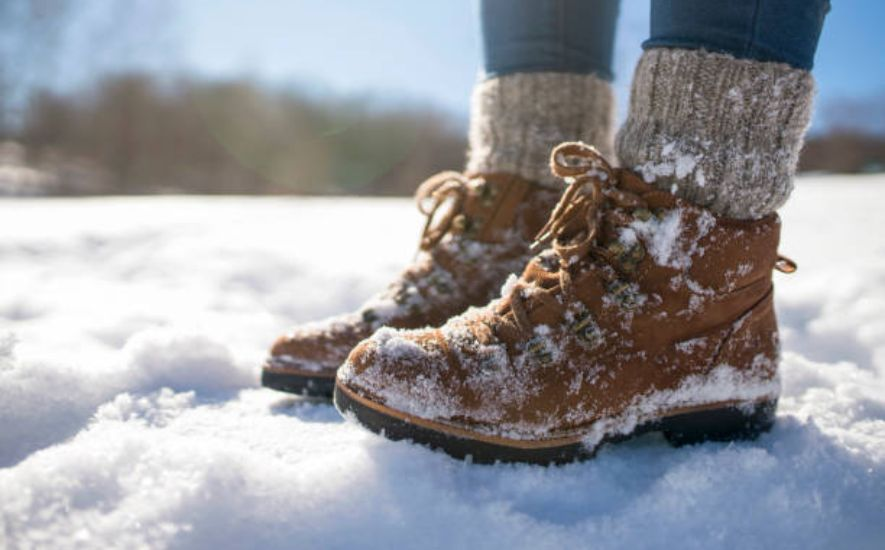
Blister Formation
One of the most common issues with hiking boots is blister formation. Blisters are formed when the skin on your feet rubs against the boot's interior, causing friction. This is particularly true when your feet get wet and your socks are soaked with sweat or moisture.
Solution: Invest in quality socks that wick away moisture, preventing friction and blister formation. Make sure to break in your boots before hitting the trail to avoid hot spots and blisters.
Hot Spots
Hot spots are areas of the foot that feel hot or tender but haven't yet blistered. They're caused by excessive pressure and rubbing against the boots.
Solution: Ensure a proper fit by trying on several pairs of boots before purchasing. Look for boots that provide ample room in the toe box and a snug fit around the ankle. Experiment with lacing techniques to alleviate pressure points.
Heel Slippage
Heel slippage is common when your boots are too big, or the heel cup is too shallow, causing your foot to move around inside the boot.
Solution: Opt for boots with a heel lock lacing system to keep your heel secure. Alternatively, try thicker socks or insoles to fill the gap and provide a snug fit.
Toe Pain
Toe pain is often caused by boots that are too tight in the toe box. This can lead to discomfort and even blackened toenails.
Solution: Look for boots with ample room in the toe box, allowing your toes to wiggle and breathe. Avoid boots that are too tight in this area, as it can lead to serious pain and injury.

Frequently Asked Questions (FAQs)
The best way to find the perfect pair of hiking boots is to try on several different styles and brands. If you are buying online, make sure you know your size and how the boot fits in the toe box area. Here are some faqs on how to choose hiking boots:
Is it better for hiking boots to be bigger or smaller?
When it comes to hiking boots, it's generally better for them to be slightly bigger rather than smaller. This is because your feet tend to swell and expand when you walk for extended periods, especially in hot weather. A too-small boot can lead to discomfort, blisters, and even toenail damage.
On the other hand, a slightly larger boot allows you to wear thicker socks, which can provide additional cushioning and protection for your feet. It's important to note, however, that a too big boot can also lead to foot slippage and instability, so it's essential to find the right fit for your feet.
How much room should I have in my hiking boots?
When it comes to the fit of your hiking boots, it's important to leave enough room for your feet to move and breathe comfortably. Generally, you should aim for about a half inch (1.27 cm) of space between your longest toe and the end of the boot. This allows for natural foot swelling that occurs during extended periods of activity.
Make sure there is enough width in the boot to accommodate any orthotics or socks you plan to wear. However, keep in mind that the fit of hiking boots is highly individual and can vary based on the brand and style of the boot, so it's always best to try them on and walk around in them before making a purchase.
How do I know if my hiking boots are too big?
You can try several things to know if your hiking boots are too big. First, ensure your feet are snugly and comfortably secured in the boots without slipping. You can also try walking around to see if your heel lifts or if there is too much space between your toes and the front of the boot.
If you can fit more than one finger behind your heel or if your toes are hitting the end of the boot, it's likely that they are too big. Additionally, if you feel any discomfort or pain, your boots may be too big or not the right fit for your foot shape. It's important to find the right size and fit for your hiking boots to prevent blisters, hot spots, or other foot injuries.
Conclusion
In conclusion, finding the right fit for hiking boots is essential to ensuring a comfortable and safe outdoor experience. It is important to consider factors such as size, width, and terrain to determine the best fit for your feet.
Try hiking boots with the socks you plan to wear on your hike and walk around to test the fit and support. With the proper hiking boots, you can confidently tackle any trail and enjoy the beauty of nature without worrying about your feet. Happy hiking!







